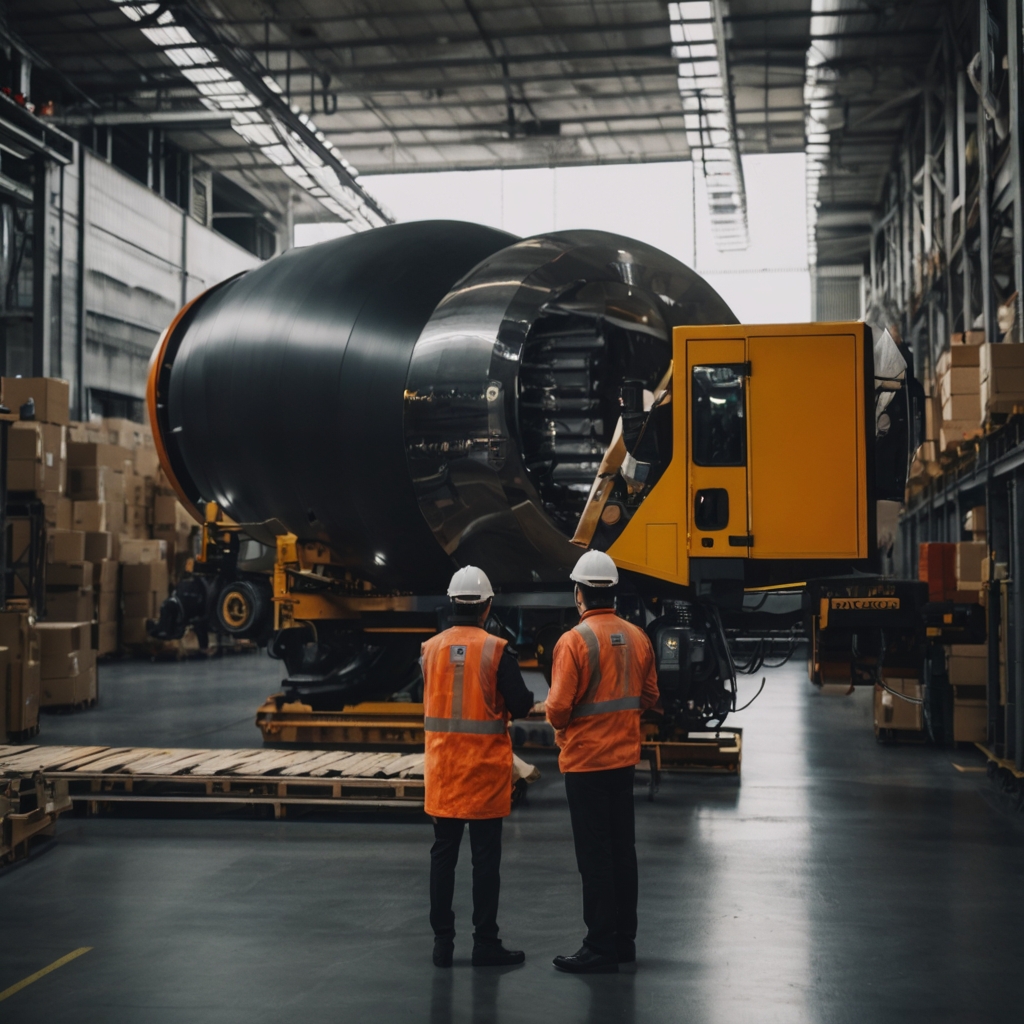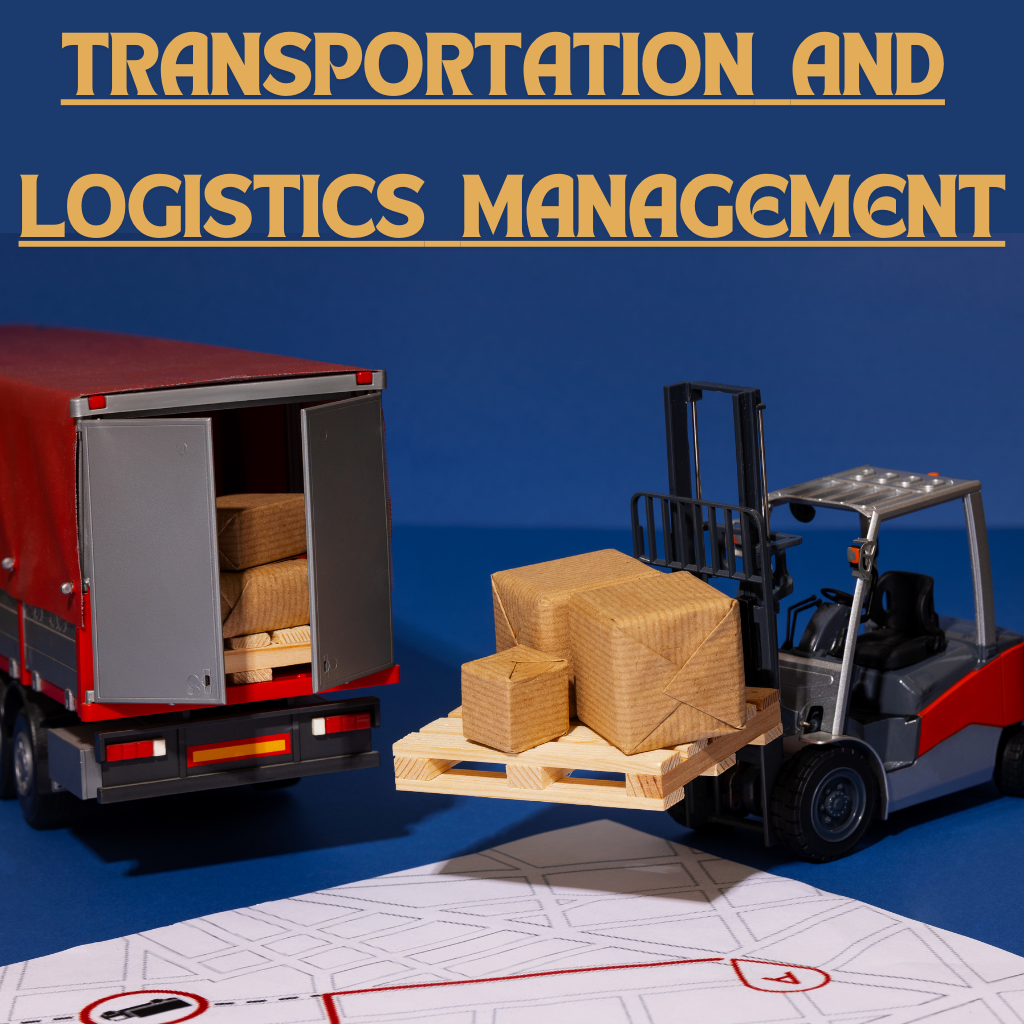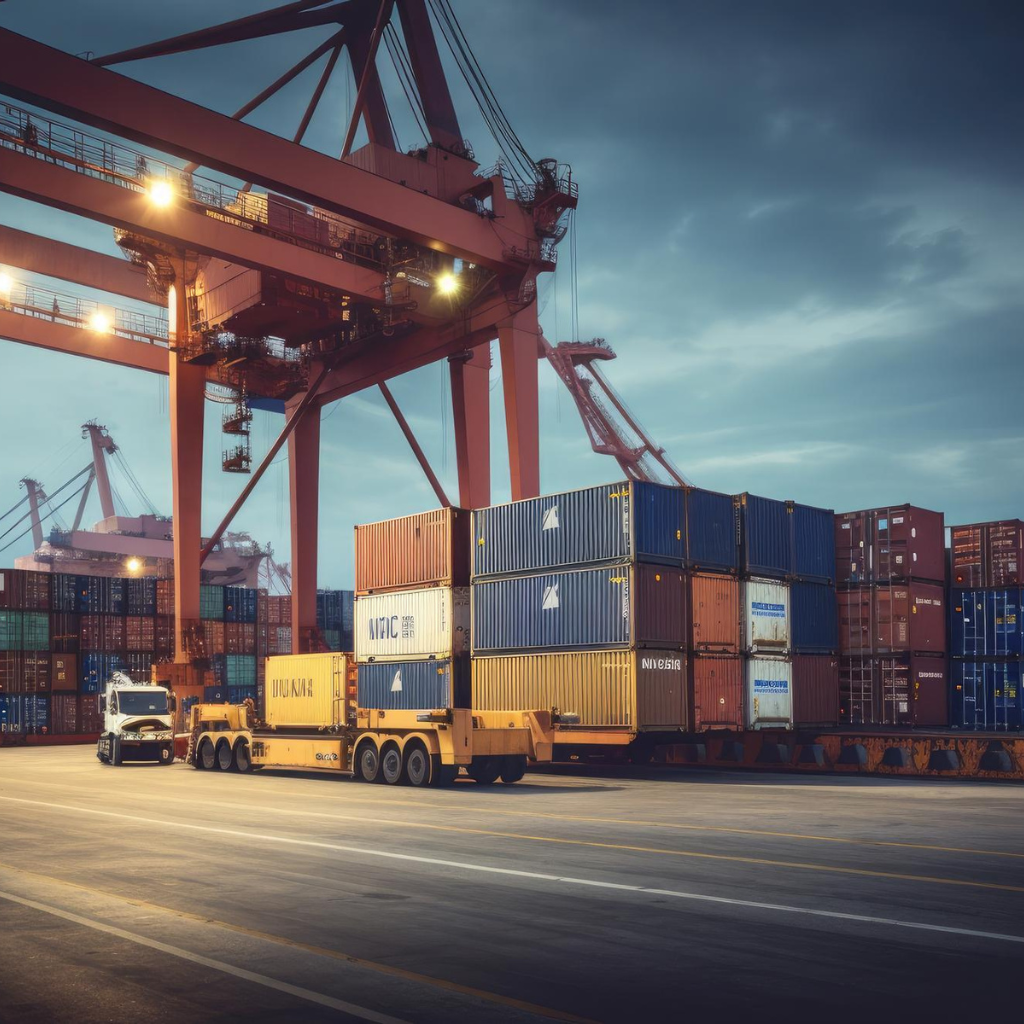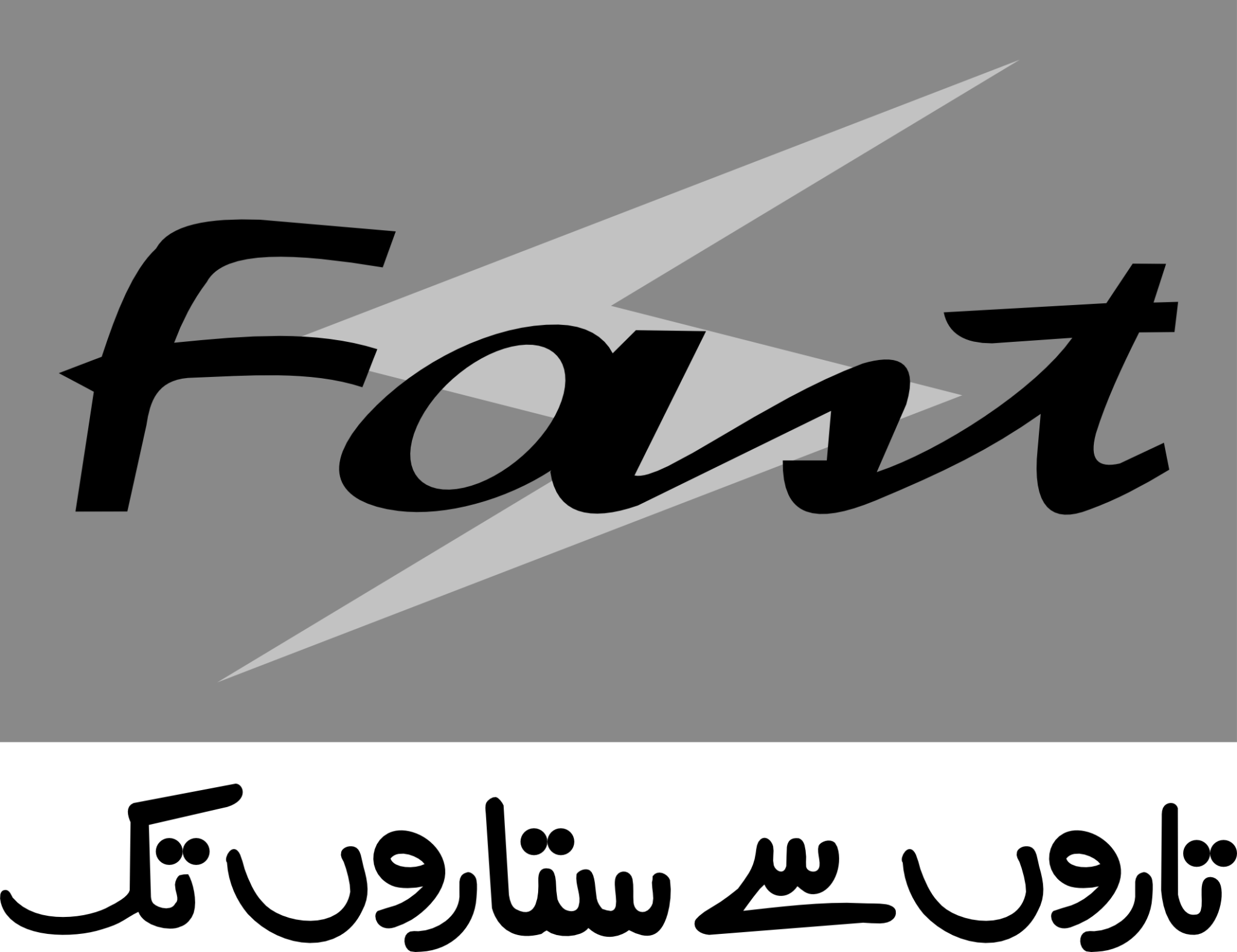Quick Commerce: Shaping the Future of Freight
Shaping the Future of Freight with Quick Commerce
Quick Commerce
Quick Commerce stands for convenient online ordering and fast delivery within one hour after receipt of the order. More and more industries are evaluating whether and how quick commerce can help them meet rising customer expectations. Read on to find out who is benefiting from quick commerce and what the logistical challenges are.
INFOBOX: The Essentials in Brief
It is not quick commerce vs e-commerce; rather, quick commerce is the turbo of e-commerce. E-commerce has accelerated traditional mail order into the 21st century, and quick commerce is taking it even further.
What is quick commerce all about?
- Fast delivery (ideally in less than an hour)
- Delivery from decentralized micro-fulfillment centers (so-called dark stores)
- Limited range of products (focus on fast-moving consumer goods)
- Delivery vehicles adapted for urban areas (e.g., two-wheelers, small transporters, mini delivery vans)
Significance of Quick Commerce in Logistics
- Quick commerce applies to the B2C sector, particularly to the last link in the logistics value chain: the last mile.
- Quick commerce requires the development of dark store networks tailored to the needs of the respective sector.
The vehicle fleet must also be adjusted to meet the requirements of fast delivery in urban areas. Last but not least, the individual process steps must be precisely interlinked to enable fast delivery. High quality process management is an essential prerequisite for quick commerce.
Quick Commerce:Examples from the Present, Prospects for the Future
As a complement to brick and mortar retail in urban areas, the introduction of Quick Commerce dates back to before the COVID-19 pandemic. At that time, retailers aimed to extend their core business with fast door to door delivery of everyday items such as groceries or drugstore products. However, the subsequent rise of quick commerce is closely linked to the pandemic.
COVID-19 Pandemic as Catalyst for Quick Commerce
Quick commerce took off only with the lockdowns, which led to an explosion of online orders. Since then, the market for quick commerce solutions in urban areas has grown rapidly. This trend is likely to continue on a global scale. Quick commerce for grocery delivery is now available in most urban areas around the world, partly through established retailers and partly through specialized quick commerce providers.
Not Every Industry Is Suitable for Quick Commerce
Quick commerce is not applicable to every business model or product segment. For example, it largely excludes the B2B sector and rural areas, where the quick commerce concept is not profitable. The low population density and corresponding low demand, on the one hand, and the necessary dark store infrastructure, on the other, are not economically viable.
Additionally, the weight and size of products are limiting factors for quick commerce. Large products such as furniture or flat-screen displays require more storage space than is available in typical dark stores, and transport involves larger vehicles. There is also the question of whether the cost of permanent storage for products that are not in constant high demand is proportionate to sales.
For this reason, sectors that are primarily concerned with rapid availability could benefit from quick commerce in the future. Besides the grocery and drugstore sectors, this could also apply to the supply of pharmaceuticals.
Chances and Challenges of Quick Commerce
In the age of e-commerce, customer loyalty can be driven not only by high quality products but also by a positive delivery experience. A hassle free online shopping experience, with delivery within one hour from order to delivery, helps companies attract and retain new customers.
However, the transition to quick commerce comes with risks that should not be underestimated. The changeover is costly in terms of fleet, personnel, and infrastructure. Furthermore, the required goods must be constantly available in the right quantities. Finally, delivery standards must be maintained at all times. If a company promises to meet customer expectations for smooth delivery in the shortest possible time but fails even once, it can lose relevance and face competitive disadvantages.
Quick Commerce in Summary
Quick commerce can be described as next generation e-commerce with exceptionally fast product delivery. As with e-commerce, the purchase process is entirely online. Products are delivered within one or a few hours after the order is placed. This is only possible over short delivery distances and is usually economically viable only in urban areas. Quick commerce requires a network of decentralized warehouses stocking a limited range of fast moving consumer goods.


Reducing Costs in Logistics: Strategies for Companies
Effective Strategies for Reducing Logistics Costs
The storage and transportation of goods, whether they are goods for sale or means of production, inevitably incur costs. Depending on a company's business model, costs in logistics can account for a relevant proportion of total expenditure. Reducing them is an effective lever for improving the company's results, and businesses can control their logistics costs with targeted measures.
Costs in Logistics are More Than Just Storage and Transportation Costs
Costs for logistics processes are a non negligible component of the operating expenses of companies involved in the physical flow of goods and merchandise. Putting the brakes on costs here to increase profit margins is a promising approach. However, it is only effective if logistics expenditure is viewed holistically.
It's not just about how direct storage and transportation costs can be reduced but also about all logistics related processes that occur before, during, and after storage and transportation. Only when all factors are taken into account can you obtain an overall picture of the costs in logistics. And only then can you calculate and reduce them.
Cost Factors in Logistics
Logistics is a complex field, and the costs incurred by a company due to logistics are correspondingly wide ranging. A prerequisite for analyzing the total logistics related costs incurred and tapping into savings potential is considering each process in the operational sequence. In which processes is logistics involved?
The most important factors in detail:
- Storage costs
- transportation costs
- Packaging costs
- Administrative costs for order processing
- Costs for strategic tasks
Outsourcing or InHouse Logistics?
There is a categorical difference between a company needing more resources and expertise to implement its logistics solutions and cooperating with external service providers. For smaller companies, in-house logistics is generally not an option. This is particularly true for most online retailers, who are therefore dependent on
e-commerce logistics service providers.
When it comes to strategies for reducing costs in internal logistics or outsourcing logistics processes, it should be noted that outsourcing itself can be a way of reducing costs. This is the case when an analysis of the financial resources shows that a company is better off hiring a transport or warehouse logistics service provider. Cost savings often happen when fixed costs, such as investments in infrastructure and technology, as well as costs for their operation, are eliminated, and companies only pay for the services actually provided.
However, the decision for or against logistics outsourcing is not only about costs but also about control over the processes or the direct line to the customer. For this reason, this article deals with strategies for reducing the costs of in-house logistics and logistics services.
Cost Reduction for Internal Logistics
If there are good reasons for a company to keep logistics in its own hands, then the key to successful cost reduction lies in the area of inventory and process management, transportation management systems. Optimized processes save material, time, and personnel resources and, therefore, money. Warehouse and transport logistics must always be considered together, as the interfaces between the two logistics areas of incoming and
outgoing goods must be designed in such a way that the transitions run smoothly.
Despite this overall view, transportation and storage each offer specific approaches to reducing costs.
Lower Costs in Warehouse Logistics
In warehouse logistics, you can optimize processes and save costs through:
- Warehouse logistics controlling based on warehouse KPIs (Key Performance Indicators): Space costs money and the longer certain stocks occupy space, the more expensive it is to store them. KPIs on the inventory turnover rate, throughput times, or storage costs per unit provide information on storage efficiency.
- Matching demand and capacity is key to an efficient and cost saving warehouse. Goods in high demand must always be in stock, while slow-moving items only take up valuable space. Demand analyses, demand forecasts, and coordinated inventory management that harmonize procurement and distribution are prerequisites for sustainable cost reduction in the warehouse.
- Optimized use of space and automated processes intelligent shelving systems and shelving robots enable efficient utilization of spatial capacities improved walking routes in the warehouse or automated picking speed up processes. Automation initially represents an investment that usually pays for itself quickly through process optimization.
- Modern IT solutions all of the points mentioned above require one thing: the use of modern technologies. These include the aforementioned robots, which have long been used in modern warehouses, or drones for inventory management and stocktaking but above all, IT warehouse management systems (WMS). Such systems are not only used for better planning and utilization of capacities or a real time comparison of physical stock and the stock in the inventory management system but also, for example, facilitate KPI monitoring. Logistics control for cost management and cost control would be impossible without modern IT solutions.
Lower Costs in Transport Logistics
Companies with their own logistics fleet cannot influence the fuel price or the level of road tolls and only have limited power over personnel costs during driver shortages. Skilled workers are scarce and need to be paid accordingly. The vehicles themselves also offer only limited savings potential. They have to be purchased, maintained, or repaired regardless of their technology. The subsidy situation for environmentally friendly drive systems has deteriorated in Germany and other European countries, so vehicles with alternative drive systems offer added ecological value but hardly any financial incentives.
In transport logistics, as in warehousing, optimizing processes to save costs is essential. Two starting points are particularly relevant here:
- Optimized route planning to use vehicles, fuel and personnel as efficiently as possible.
- Intelligent load formation which makes optimum use of the loading area depending on weight and size and, in conjunction with route planning, also adjusts the load to the sequence of destinations.
As with warehousing and distribution services, nothing works without IT systems, ideally with the support of artificial intelligence (AI). AI supported route planning uses traffic and weather data as a basis for calculation and can adapt the route accordingly.
Cost Reduction With Outsourced Logistics
The savings potential here depends on the respective logistics model. Whereas previously we talked about in-house logistics first party logistics (1PL) outsourcing is now available in 2PL to 5PL levels: from simple outsourcing of transportation in second party logistics to complex fifth party logistics, where a 3PL company not only takes over all logistics processes but also offers analyses, consulting or big data services.
The more services a partner provides in addition to transport or storage, such as order picking, fulfillment, or returns management, the more fees are incurred, but these are no longer fixed costs and can potentially be reduced with good negotiations. The market is also constantly changing, so service recipients should continuously monitor providers and their products and obtain comparative offers. Attention is advisable, as differences in individual items can make comparisons difficult.
Typical cost items of logistics service providers are:
- Incoming goods
- Warehousing
- Order picking
- Packaging
- Shipping
- Returns
To reduce your freight costs with a 2PL model, you should compare the freight rates of different providers. However, low cost does not necessarily mean long term cost savings if the delivery quality could be better. In the age of e-commerce, delivery is crucial to the customer experience saving money in the short term and losing customers in the long term is not a win.
How Transportation and Logistics Management Helps Businesses Save Money
Saving Money Through Optimized Logistics and Transportation
Transportation and logistics management are the two critical activities encompassing every good and effective supply chain. Through codifying optimal transportation flow, strict inventory control, and implementing kinds of efficient transportation solutions, one can not only enhance the performance but also gain tremendous cost savings. This blog is going to focus on how and to what extent the appropriateness of transportation and logistics can be helpful in reduction of costs and be proactively useful for businesses out there.
Impact of Transportation and Logistics on Costs
Transportation and logistics management can be defined as the process of coordination, organizing and supervising the physical distribution of goods using various modes of transport from one organization or a certain point to another. The effectiveness of these means the reduction of extra costs and the improvement of the gross, which, in its turn, contributes to the increase in profitability of companies. Here are some of the ways transportation and logistics management directly impact cost savings:
1. Optimized Routes and Fuel Savings
- Route Planning: Businesses are able to make proper anticipation of time and space through application of technology by coming up with proper traffic patterns to avoid traffic hold up.
- Fuel Efficiency: Specific courses result in minimal use of fuel, and while the initial outlay may be high, one saves a lot of money in the long run.
2. Reduced Transportation Overhead
- Consolidating Shipments: Consolidating volumes of orders in one shipment implies that several orders can be shipped at once instead of many individual shipments hence implying less costs of transport. This can be made possible by service delivery such as Freight Forwarding.
- Negotiating Better Rates: Transportation management solutions help the clients to coordinate with various carriers as well as evaluate the rate of different providers and negotiate for lower contract prices that will in turn translate to lower costs.
3. Minimizing Inventory Costs
- Just-in-Time (JIT) Inventory: JIT reduces the capacity for storing inventory simply because materials and products are obtained as they are required. This has the effect of lowering warehousing and inventory expenses.
- Reducing Stockouts and Overstocks: Inventory control minimizes occasions where companies end up with too many products that will prove costly to store or instances where there are not enough products to meet demand. Some of the Services like Fulfillment and Consolidation can be useful to enterprises in managing inventory.
TMS Solutions for Reducing Logistics Costs
Transportation management solutions (TMS) are complex software applications designed to facilitate and enhance the transportation planning process. These solutions can help save money in a variety of ways:
1. Better Decision Making with Real Time Data
- Visibility: With TMS, shippers are also able to watch their shipments in the flow in real-time thereby getting early alerts of disruptions that would be expensive for the business.
- Data Analytics: Analyzing past information allows the companies to predict behavior and experience better control of their shipment and overall logistical functions.
2.Consolidating Buying Power to Reduce Costs
- Evaluate Carrier Performance: TMS can compare carriers according to costs, their ability to meet certain reliability standards, as well as the delivery times received, which enable a business to choose the best carriers at minimal cost.
- Negotiate Rates: As businesses are better placed to get detailed data for carrier performance and cost, they can be able to strike better bargains in the transportation costs further reducing the expense level.
3. Improved Shipment Accumulation
- Reduced Freight Costs: Little mean reduced charges for the freight, and therefore, less overhead costs.
- Less Handling: Consolidation of shipment also reduces the probability of handling and storage costs, ultimately driving down the costs.
Logistics and Distribution for Cost Savings
1. Optimal Network Supply Chain Management
- Optimal Location of Warehouses: Infrastructure with customers also is advantageous since it means there are reduced transportation costs due to shorter distances, and delivery time.
- Cross-Docking: This method involves the movement of products from vehicles that transport them into other vehicles that transport them directly without storing them. The availability increases the pace at which supply chains are completed and reduces the expenses related to it. For cross docking, Drayage services may be of immense advantage to a business as they assist in the movement of containers to and from the ports.
2. Warehouse Efficiency
- Faster Order Fulfillment: Efficient storages enable the picked products to be shipped faster thus cutting transport and handling costs in the supply chain.
- Lower Storage Fees: When using the optimum storage space, more area is conserved therefore incurring less costs in rentals and utilities.
3. Improved Stock Visibility for Improved Forecasting
- Demand Forecasting: This way, customer demand can be forecasted perfectly, so that goods can be shipped appropriately, and avoid a build-up of stock or no stock at all.
- Reduced Stock and Freight Costs: Reduced need to crank up deliveries increases transportation costs, thus reducing general logistics costs through accurate demand forecasts.
Conclusion
Tips for Saving Money in Transportation and Logistics
In conclusion, here are a few important methods through which the ability of transportation and logistics management to save money can be affirmed: By implementing the following strategies, companies can achieve significant cost reductions:
- Create efficiency by using Transportation Management Solutions (TMS) to cut down routes, fuel consumption, and select a provider.
- Depending on the procedures of a given company, it can be recommended to adopt Consolidate Shipments that will cut on the overall transportation expenses besides enhancing effectiveness. To address this, there is Freight forwarding and Fulfillment and Consolidation services that can assist businesses to handle this well.
- Managing Inventory effectively through the use of Lean manufacturing techniques like; Just-in-Time (JIT) and doing away with the unnecessarily stockpiled assets.
- When handling sensitive products use Pharma Logistics since they ensure legal compliance and affordable transport rates.


The Role of Freight Forwarding Services in International Trade
The Essential Role of Freight Forwarders in Cross Border Logistics
What is Freight Forwarding?
Freight forwarding consists of logistics in the international movement of shipment or any goods. Freight forwarders help themselves by creating connections of international transportation providers including land, sea and air transportation providers as well as paperwork and shipping channels for businesses. In other words, they serve to make the rather intricate phenomenon of international business easy by taking the technicalities of transporting the goods.Find out more information on our Freight Forwarding Services.
Importance of Freight Forwarding in Business
International freight forwarding services are as important now as they have been in the past because they play a very vital role in the carrying of goods across borders. Here’s why:
-
Global Market Access
Logistic services include shipping services whereby organizations can transport their products across the world to get to the consumers. They solve geographical/time space problems since they make it easier to transport goods from one country to another and bring producers close to consumers worldwide.
-
Cost Efficiency
Freight forwarders are responsible for managing ways and means of shipping in a way that most benefits their clients within the supply chain. When sorting and banking, negotiating affordable rates for large-scale contracts and considering a favorable route, forwarders take measures that lower the general cost of imports, a bonus for businesses of any size.See our range of LTL & FTL Delivery Options contact us for the best prices possible.
-
Streamlined Documentation
Globalization has rules that govern all international transactions and the freight forwarders handle the relevant documents which show compliance with the regulations of the two countries, of export and import respectively. They help mainly with documents such as: bill of lading, certificate of origin, commercial invoice, etc. For Customs service, please go to Customs Clearance Services to get detailed information for smooth clearance.
-
Cargo Safety
Main services include cargo insurance and risk management of the international transport of goods provided by freight forwarding companies. They guarantee that goods are conveyed in a safe manner, avail themselves in case of any risk occasioned by damage or loss and give a secure and reliable transport system a value addition to the supply chain.
-
Customs Expertise
Adjusting to customs rules and regulation may not be easy. Freight forwarders assume complete responsibility for all documentation procedures as well as the country’s import/export rules. They are familiar with the conditions regarding customs and facilitate their clients to avoid certain complications of getting delayed or charged by failing to adhere to tough requirements.
Main Freight Forwarding Services
Freight forwarding companies provide several key services that simplify international shipping, making it easier for businesses to navigate the complexities of global trade:
-
Cargo Transportation
Freight forwarders organize transport by sea, air or on the ground; depending on the cost, time and nature of the cargo.Read more on how we operate in Freight Forwarding.
-
Warehousing and Distribution
Freight forwarders provide storage facilities for temporary stock and also assist in stock management before disseminating the stocks to the end users. This can be especially relevant to organizations which require specific amount of stock, joining goods together or allow various delivery options.If you still want to know more information about our Fulfillment & Consolidation Services, please click here.
-
Customs Clearance
They help all products to clear customs with ease and get the necessary documents, and pay the right amount of tariffs and levies. This way the freight forwarders minimize on time wastage and make sure that they follow the various and changing rules of customs of various nations.See how you can get help on Customs Clearance services.
-
Consolidation and Deconsolidation
Aimed at minimizing costs, freight forwarders group micro freight movements (consolidation) into one macro freight movement. Once the shipment has arrived at their destination they are segregated (deconsolidation) and delivered to their respective owners. This is advantageous to companies which either individually cannot fill a container meant for bulk shipment while at the same time they can book the same services at cheaper rates.
-
Cargo Tracking
They offer tracking devices that enable a customer to track his or her goods at every destination. This technology makes it possible for the forwarder and the customer to be in a position of acknowledging the status and location of the goods, hence improving on how delivery expectations could be managed in the event of a hitch.
Freight Forwarding FAQs for Businesses
Outsourcing logistics to freight forwarders provides several key advantages for businesses:
-
Efficiency and Time Savings
Freight forwarders possess specialized skills, business understanding and information regarding the appropriate means of transport and proper channels to use. They understand how to eliminate time-wasting and how best to shorten delivery time. It also means that companies are able to concentrate on important activities without being overwhelmed by the aspect of delivery.
-
Flexibility
More transportation modes include land, sea and air so business people can choose the most appropriate mode. Express shipment requires air freight while other general shipment requires ocean freight depending on the required size and time.
-
Reduced Risk
Today, clearing agents provide insurance in cases when the good being transported is damaged. Apart from reducing the possible cost consequences of the shipped goods, they assist in controlling general risks that come with cross border transport, such political, environmental and additional risks.
-
Scalability
Freight forwarders can be used by companies of any form and size from importers exporters and small businesses to international companies. Flourishing organizations then can consult forwarders for enhancing logistical capabilities with better and tailored freight forwarding solutions that make sense for a company’s expanding needs.
-
High customer satisfaction
In delivery time management, cost cutting, and improving visibility and accountability, freight forwarding services can assist companies in sustaining their customers’ relations. Repeat patronage is very important in any business, and timely delivery speaks volume about satisfaction in international business.
Enhanced Competitiveness
He added that through the services of freight forwarders, businesses have the ability to compete in the foreign marketplaces. Through reducing costs and increasing productivity, the enterprise can afford to offer better prices and shorten the delivery time, which in its turn will create competitive advantage. There is a special emphasis to industries such as pharmaceuticals where through our Pharma Logistics we guarantee strict compliance in handling of commodities.
Freight Forwarding's Impact on Business
Freight forwarding is a very crucial participant in the global trade. Getting logistics services such as freight forwarding services work together to connect the world through trade. These services enable organisations irrespective of size to communicate with customers and consumers globally, conduct cross border sales and purchase, and integrate into global supply systems.Want to know more about Trade Advisory services to maximize your international Business Solutions?
Conclusion
Global freight forwarding services are vital for businesses, as they manage the transportation of goods, reduce costs and time, and ensure compliance with international trade regulations. By outsourcing logistics, businesses can focus on their core operations while ensuring safe and efficient cross-border transportation. With increasing globalization, freight forwarders will play an even more critical role in helping companies minimize costs and mitigate risks as they expand into international markets.We also do Household Moving for those families or individuals who require relocation services.











































































































